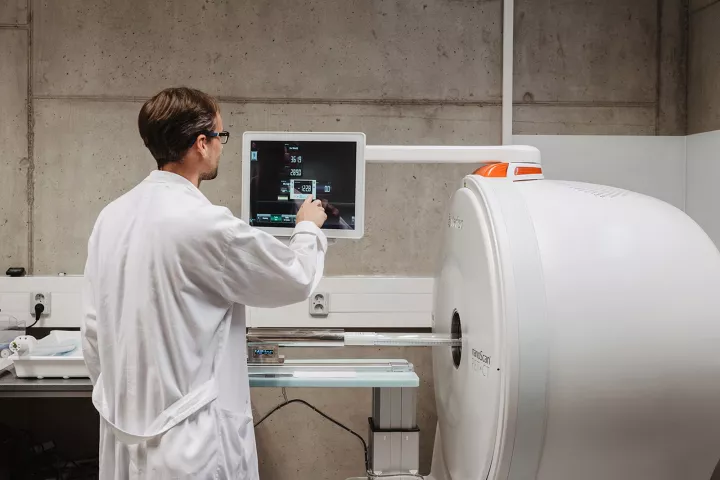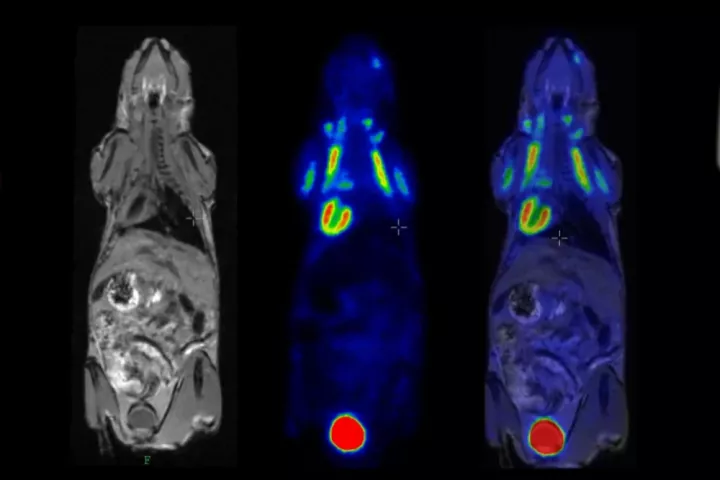Years ago, Miloš Petřík entered the Faculty of Pharmacy at Charles University in Hradec Králové with the vision that he would end up working in a pharmacy after school. However, during his studies he discovered that there is more to it than that. His scientific career and research focus were decided by a doctoral internship at the Clinical Department of Nuclear Medicine in Innsbruck, where he later worked as a postdoc. Although his initial motivation for staying in Austria was his passion for skiing and hiking, he eventually became fascinated by research on radiolabeled substances. Since his return to Olomouc, he has been working in the Radioisotope Laboratory.
Together with his colleagues, he is looking for new substances that would surpass the currently used radiopharmaceuticals in their properties and thus improve the diagnosis and treatment of diseases.
“Our primary research focus is on radiolabeled substances, potential radiopharmaceuticals, especially for the diagnosis of cancer and infectious diseases. This ranges from their synthesis, characterization, in vitro testing on cancer cell lines or microbial cells to testing on laboratory animals,” the pharmacist described the research. He considers his greatest personal achievement that one of these compounds has reached patients. In collaboration with Austrian colleagues, it is currently being tested in a clinical trial.
The link between research and practice that he experienced in Innsbruck is of great importance to him. In Olomouc, he also cooperates with the Nuclear Medicine Clinic of the University Hospital. “I am glad that with the construction of a new building of the clinic, possibilities for deeper cooperation are emerging. A laboratory for the production of radiopharmaceuticals is also planned in the new building, which will be unique in the Czech Republic. This laboratory should, among other things, open up possibilities for easier initiation of clinical trials with the substances we are developing,” he added.
In his work, he could not do without cutting-edge imaging methods. His department is well-equipped in this respect. “Our instrumentation for imaging small laboratory animals is unique. We have PET/SPECT/CT, optical imaging, ultrasound and, more recently, magnetic resonance imaging combined with positron emission tomography. “While computed tomography is advantageous for skeletal imaging, MRI allows us to better visualize soft tissue. If we inject an animal with a radioactive substance, thanks to a combination of PET/CT or PET/MRI, we can follow the distribution of radioactivity in the body and pinpoint exactly where the substance is,” explained the scientist, who relaxes, if his three off-springs allow it, with a good book, a sport activity or in the mountains.
The article available in Czech HERE.
Text: Martina Šaradínová, translation: Karolina Zavoralová, photo: Denisa Pavelková


